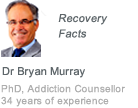Xanax Addiction
Xanax addiction is a steadily increasing problem amongst both prescribed users and recreational drug users. Xanax, a schedule IV controlled substance, has effectively been used to treat people suffering from severe anxiety and depression. Since Xanax is a controlled substance, legally it can only be obtained through a physicians order, but it can be readily found on the street in every city in the States.
Xanax is a bezodiazephine derivative that acts like a human tranquilizer. It contains sedative, hypnotic, and muscle relaxant properties. Xanax, when properly used, enables those who suffer from anxiety disorders and depression to lead relatively normal lives. However, the frequent prescribing of Xanax has led to an abundance of the substance being available for purchase.
What is Xanax Addiction?
The nature of Xanax and the anticipated length of treatment period make it highly habit forming. Xanax is generally prescribed as a long term method of treatment as apposed to the shorter terms often imposed with other benzodiazepine derivatives. Xanax acts much like alcohol, in that it depresses the nervous system. Over extended periods, the body builds up a tolerance for the drug and thus minimizes its effects.
As a result of this elevated tolerance level, patients often increase their dosage in order to attain the same level of comfort and relaxation. Studies suggest that the majority of Xanax’s prescribed users are able to avoid dependence on the drug, but for those who do become dependent the consequences are serious.
Xanax’s sedation and hypnotic qualities make it one of the most commonly misused drugs in the benzodiazepine family of drugs in America. Xanax affects the section of the brain that regulates alertness. It inhibits the receptors that precipitate nervous system stimulation. This causes a lull in alertness and awareness, so its effects on users appear similar to the effects of alcohol. Recreational drug users frequently combine Xanax with other stimulants such as cocaine.
Symptoms of Xanax Addiction
As an anti-depressant, Xanax slows responsiveness in order to minimize anxiety. Many of the signs that exemplify Xanax addiction run along those same lines. The main symptoms of Xanax addiction are:
- Mental confusion
- Memory loss
- Difficulty concentrating
- Excessive sleep and sleepiness
Treatment for Xanax Addiction
The withdrawal symptoms associated with Xanax addiction are not as severe as others caused by benzodiazepine derivatives but they include: shaky hands; rapid heartbeat; insomnia; disturbed sleeping; suicidal thoughts and depression. Because Xanax affects the way that the brain functions, it is difficult to kick the habit without professional help.
In a professional treatment setting, the withdrawal side effects can be minimized by gradually decreasing the dosage of Xanax if quitting abruptly is too much for the addict. With consideration to the possibilities of suicide, and remembering that Xanax is most often prescribed to treat chronic depression, it is very important that addicts be progressively weaned from the drug and are professionally monitored. Xanax affects how the brain functions, and the bodies natural rhythms. Addicts are likely to need extensive psychological therapy in order to complete rehab from their dependence. There is no easy solution to Xanax addiction, but with the right help and continued support users can live a completely normal life again.












